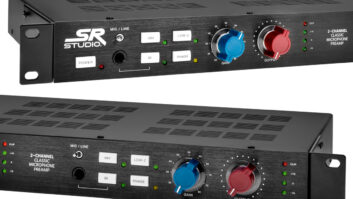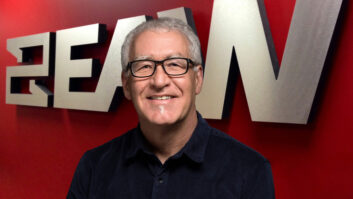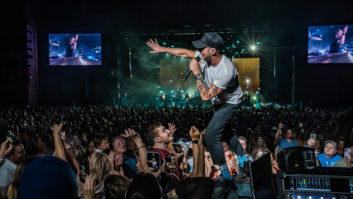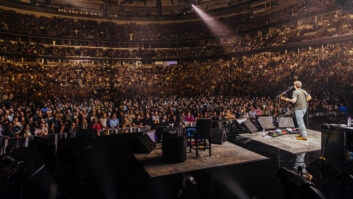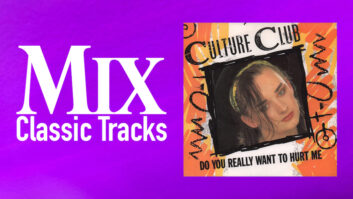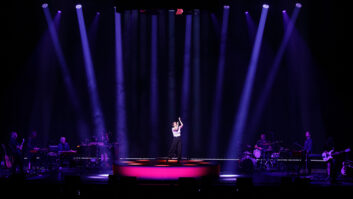by Clive Young.

A rash of torpedoed tours, weak ticket sales and cancelled dates has the touring industry concerned this summer.
U2, halfway through a multi-year jaunt predicted to be the highest-grossing tour ever, announced in May after lead singer Bono had back surgery that it was postponing its entire run of 16 U.S. stadium shows to mid-2011. Soon after, a Simon & Garfunkel reunion run was scuttled, too, due to the latter suffering a vocal condition.
This was the tip of the iceberg, however. Soon, The Eagles, Lilith Fair, the Jonas Brothers, the fledgling Country Throwdown festival tour, Maxwell and others began calling off low-selling shows, while Rihanna canned her tour opener and Christina Aguilera’s tour was shut down before it even began. Even typically solid-selling perennials like Sting, Dave Matthews Band, John Mayer and American Idol are seeing soft ticket sales or steep discounts in some areas. The result is that Pollstar mid-year statistics find gross ticket-sales revenue down 17 percent from 2009, while the number of tickets sold is down 12 percent and the average gross per show is down 14.4 percent.
All-star injuries aside, something is wrong within the touring industry this summer, and while ticket sales don’t directly affect national live sound providers, how the artists and promoters react after the season will have a bearing on the sound reinforcement companies—and the pro audio business.
So what’s causing the summer slump? High-placed executives from two respected, major sound companies—each with hits and misses on the road this summer—shared their thoughts, on condition of anonymity.
“The reality is that the economy is not what we think it is,” said one. “There’s still a lot of people out of work, and there’s still not a lot of discretionary income. Meanwhile, on our side, we see acts gearing up and going out; there has to be the ticket sales to support them—and that’s not happening.”
The other live sound provider echoed that sentiment: “The reality is that we’ve lost touch with reality. The recession has finally collided head-on with the greed, and it’s pretty obvious as you walk through a shed. Start with a high-priced ticket to begin with, tack on fees, pay for parking, pay $4.50 for a bottle of water, $50 for a shirt, and they’re wondering why in the middle of the biggest financial crisis in a generation, things aren’t going that well out there?”
The result is that many tours are pulling dates—and doing so early. “It’s economy-driven,” said one SR executive. “I’m sure [national promoters] have actuaries who can tell what a show is going to do based on pre-sales. If they’re getting yanked that soon, that tells you something.”
One sentiment repeated consistently over the last few years is that touring is the last “sure thing” of the music industry, because you can’t download an experience. Unfortunately, perhaps too many career artists have taken that to heart, hitting the sheds year-in and year-out with market-draining regularity, often without a new album—or any other compelling reason—to attract repeat audiences. For younger acts, the “tour it into the ground” mentality makes some sense—given the public’s increasingly short attention span, it’s not hard to see why they’d want to make the most of a moment if it might their last. Nonetheless, those acts are adding to the tour glut, and as one SR provider summed it up, “Your second or third time through an area, who wants to see the same show again?”
This is not to say that the summer is a complete bust. The James Taylor/Carole King double bill has been a home run, Lady Gaga is raking it in, Paul McCartney is going great guns and newly minted teen idol Justin Bieber is doing well. All of them are led by Bon Jovi—the year’s top grosser at $52.8 million, according to Pollstar (the Live Sound Showcase on page 44 offers more insight into the trek).
It’s also fair to note the postponed U2 tour didn’t issue refunds. More than 1 million tickets—worth an estimated $100 million in box-office revenue, according to Billboard—had already been sold when the shows were moved to next year; the result is that a lot of money was taken out of the market without dates posting the corresponding revenues to push up those Pollstar numbers.
Still, this year’s average ticket price on the top 100 tours will likely be harder to calculate at the end of 2010, if only due to recent fire sales by promoters, ranging from “buy one, get one free” deals to forgoing service fees. While these moves can fill seats in the short term, the long-term effect is that fans are increasingly waiting to buy tickets, presuming (often correctly) that prices will go down, allowing them to garner that $125 ticket for $25—or sometimes even for free. With venues needing to keep turnstile numbers up in order to make money on advertising, parking and concessions, they’re not above “papering the house.” How much one will spend on a t-shirt to remember a cheap show is questionable, however, and all put together, a pair of “free” tickets can still turn into a $100-$120 night after parking, gas, concessions and so forth—a sum not cheap by anyone’s standards.
While on the surface that’s the concession stand’s problem, it’s really sound providers’ problem, too. When the financial pie gets smaller, the first costs to get cut are the ingredients—and while all the national live sound providers are competitive with each other, none of them want the tour bidding process to get even more cutthroat.
“All the technologies have painted themselves into a corner,” mused one sound executive. “You need to have the business model succeed to substantiate the investment we’re making in new technologies. If the deals get sharper, something has to give. Does it mean the quality of the production has to slide? I would say that there’s going to be a lot of rethinking on artist deals and how big should a production be after this season’s over.”
What that could mean for the live sound companies—and the pro audio manufacturers who create the technologies those businesses are based on—remains to be seen.

